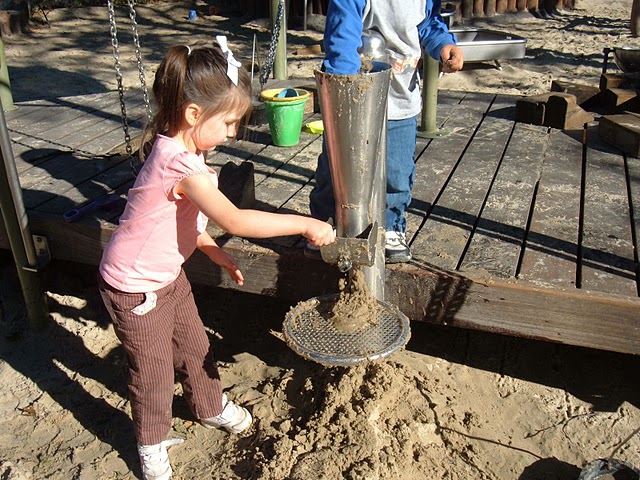
The Blue Planet, National Aquarium, Denmark
Long before the iPad and Pokémon GO, there was sand and water. The two are foundational to the earth and offer near limitless possibilities for young children’s imaginations. During the summer months, I take my two-year-old son to Chicago’s Montrose Beach on the shore of Lake Michigan. After laying out a blanket, I let him dig moats, carve roadways, and pour bucket after bucket of water.
If young children have a universal happy place, it’s where there is sand and water. But why are they so drawn to it?
Three Benefits of Sand and Water Play
1. For one thing, open-ended, imaginative play is conducive to learning. There is no right or wrong way to play with sand. A child can feel empowered knowing his or her creation is unique and deserving of recognition. A square block may not fit in a round hole, but a sand mountain, wet or dry, simple or sophisticated, is an achievement in its own right.
2. Texturally, sand and water are fascinating. There’s a reason adults like digging their toes in the sand, or splashing water on their shoulders on a hot day. In an age of screens, apps, and software innovation, tactile pleasure is especially gratifying, a skin-level reminder that the natural world is composed of sensations: “hot,” “cold,” “rough,” “grainy,” and “smooth.” Young children, of course, are being exposed to these wonders for the first time. They learn new words, new ways of expressing themselves and their experiences.
3. Then there’s all the math and science inherent in the properties of sand and water. Why does only so much sand fit in the bucket? Why does a tower without a solid base topple over? Sand and water play introduces children to important “left-brain” concepts such as “less” and “more,” “light” and “heavy,” and “empty and “full.” At the same time, it provides a gateway to more sophisticated ideas — the theory of conservation of matter, the law of gravity, cause and effect reasoning, and logical analysis.

Water Play System A
Sand and Water Play Systems
Though I’m lucky enough to live by the beach, I’m aware that not everyone is. However, with the number of new sand and water systems on the market, the beach can be recreated in immersive spaces that stimulate imaginative, sensory learning.
The Water Play System E, for instance, is a 16-by-23 foot series of channels, weirs, basins and troughs that operates like a life-sized marble tower. Children can play independently or in teams in defined spaces, as balls and sand move through the system. Easily installed in playgrounds or discovery areas, the system can be connected to a manually operated Farm Pump or Winder Pump that draws from a pressurized water line.
Other Goric ground-mounted tools, such as the Conveyor Belt, Sand Silo, and the Sand Sieve Bowl, give children the opportunity to imagine themselves in make believe worlds as members of a kitchen staff or construction crew. Turning conveyor belt cranks, lifting draw gates, and pouring sand, they exercise their imaginations and refine their motor skills.

Sand Silo and Coarse Sieve
The value of sharing is one of the most difficult lessons for children to learn; in fact, it’s almost axiomatic to say there is no shovel as cool as the one in another child’s hands. But at a sand table or water trough, virtual worlds and resources collide. By working together in a collective space, children are challenged to embrace ideas different from their own and exercise tolerance and empathy.
The other day, at Montrose Beach, my son showed particular gusto in knocking down a sandcastle I helped him build. To my mind, of course, the work was on par with the Dome of the Rock or St. Basil’s Cathedral. Yet my son was teaching me something, wasn’t he? We live in a world of widely varied abilities and beliefs. Even the most practiced among us must humble ourselves and learn to play nice.

 RSS Feed
RSS Feed
Recent Comments